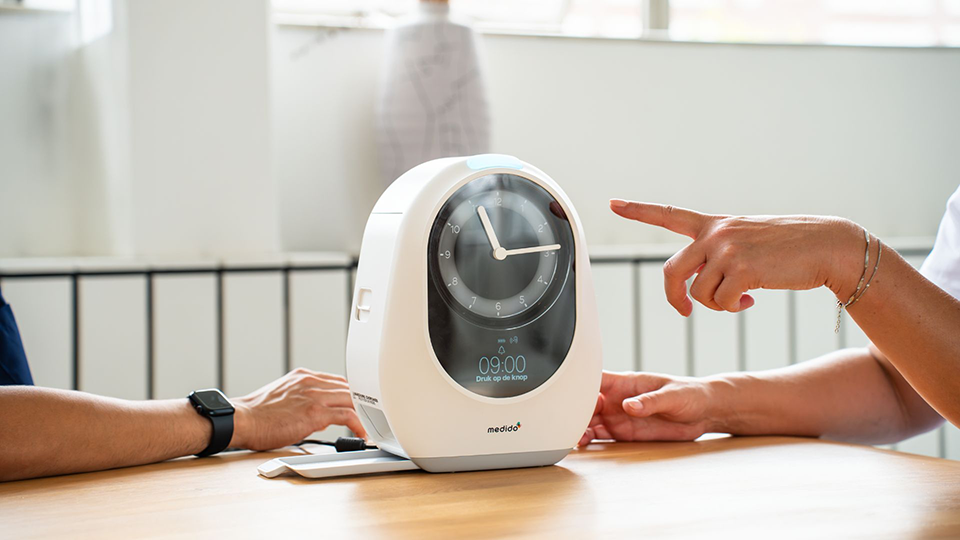Time-saving technologies in home care
Care and technology come together in eHealth. Many home care organizations currently work with a policy called 'eHealth unless...'. This means that the use of technologies in home care is assumed for every client unless there is really no other option. The use of support like eHealth increases the client's sense of self-reliance. In this blog, we want to tell you more about eHealth in home care.
Aging increases rapidly
The Dutch population is growing rapidly, and the aging population continues to increase. In order to cope with the care infarction, it has become necessary to use care technology. There are many different technological tools that support the possibilities for remote care provision and thereby support the client and caregiver. eHealth provides (more) efficient care, a lower number of care hours per client, a reduction in costs, and importantly: it promotes the self-reliance of clients.
“In the coming years, the Netherlands will still have to provide good care with many more elderly people and far fewer staff. The minimum standard of two carers for eight nursing home residents, once fought for by Hugo Borst, is being abandoned during peak hours. But more action is needed, now that the number of people over eighty is rising rapidly from 1 in 21 to 1 in 12 in 2040.” –
Source Dutch new site AD: “Following the Finns: this is what the elderly care of the future will look like”
Telehealth provides personal care at a distance
In the future, eHealth will be desperately needed to provide and continue to serve the aging population well. Telehealth makes remote personal care possible. It's a combination of digital technology and telecommunications to provide care from a location other than the client's home or health facility. It is a collective name for remote care via an online connection. Despite care from a distance, personal and physical care is still necessary in many cases. An example of this is Compaan, this is a platform for a tablet that clients can use to make video calls with healthcare providers. Care providers can easily provide care remotely thanks to Compaan.
VWS on healthcare technology
Research from Dutch Ministry VWS, Ministry of Health, Welfare and Sport, shows that technologies in home care give the client more peace of mind and control. As a result, the client experiences an improved quality of life. For example, there is better therapy compliance thanks to a medication dispenser and there is increased safety through, for example, screen care or a hip airbag.
In addition to the benefits for the client, caregivers are also relieved thanks to these technologies. eHealth can even ensure that informal carers continue to care for a client for longer because they experience fewer moments of stress.
Healthcare technologies also prove to be a solution for healthcare professionals. The quality of the work increases due to, for example, reduced physical strain on employees. The healthcare provider can also spend more time on more complex care because the medication dispenser supports the use of medication. For example, the travel time of a healthcare provider is significantly reduced when a client uses a Medido medication dispenser.
Source: Letter to Parliament report on time-saving technologies
Benefits and investments
Using technology in healthcare therefore has many advantages for healthcare organizations, healthcare providers, and clients. Vilans has listed what the use of technologies yields for healthcare organizations, healthcare providers, and clients:
- Piece of mind for the client
- More self-reliance
- More insight/information for loved ones
- Increased sense of safety
- Better control of medication
- Higher therapy compliance
- More capacity to care for other clients
- Less control and supervision
- Less travel time
- Fewer care moments
Of course, the use of technologies also requires something from a healthcare organization and client, such as the following:
- Fewer physical contact moments between client and care;
- Redesigning the care process for the new way of working;
- Incorrect use can have consequences.
Source: 13 time-saving healthcare technologies presented to the House
eHealth in the future
Telenursing, telehealth, and healthcare technology will most likely continue to evolve and new useful tools will be developed for the healthcare sector. Physical facilities will support technologies rather than the other way around. As can be read in this article, the benefits are great for the healthcare organization, healthcare provider, and client.
We have an interesting future ahead, but let's not lose sight of the client!
You May Also Like
These Related Stories

Digital Transformation in Healthcare: Empowering Patients, transforming lives

Great news about the STOZ subsidy

